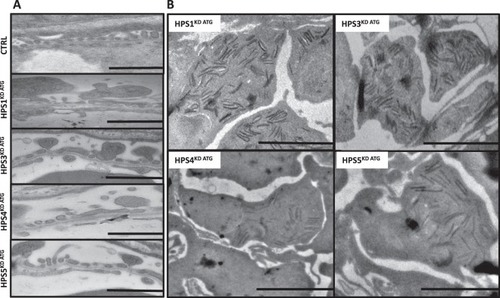Fig. 5
- ID
- ZDB-FIG-191230-1509
- Publication
- Schenk et al., 2019 - Characterizing renal involvement in Hermansky-Pudlak Syndrome in a zebrafish model
- Other Figures
- All Figure Page
- Back to All Figure Page
|
HPS1KD ATG, HPS3KD ATG, HPS4KD ATG and HPS5KD ATG induce varying degrees of glomerular damage including podocyte effacement and deposition of intracellular debris (zebra bodies). Transmission electron microscopy imaging was used to detect ultrastructural changes in glomeruli after HPS protein knockdown induced by MO injection in |
| Fish: | |
|---|---|
| Knockdown Reagents: | |
| Observed In: | |
| Stage: | Day 5 |

